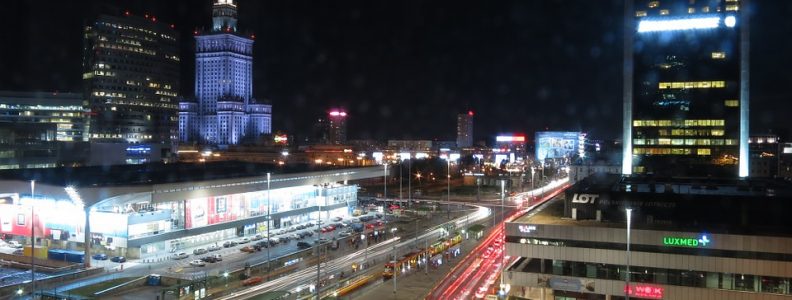Cyber Systems Urban Transitioning To Smart Cities
Smart cities are on the rise and will become wide-scale cyber-physical systems which will have sensor monitoring and the physical ability to dynamically change the environment in some ways. Industry and governments are all getting involved with the intent to improve life for urbanites by providing more efficient services. This is being done in part because projections suggest that as many as two-thirds of the world’s population will be living in urban areas by the year 2050.

When you take a look at how substantially urban life has grown in comparison to those who live outside the city, you can see how it’s going to be necessary to make major improvements. In 1950 only 30% of the world’s population lived in the city. By 2014 that had grown to over half of the world’s population that were in urban areas. And as earlier stated, projections suggest that up to 66% of the world’s population will be living in the city by 2050.
The organizational structures and infrastructures of the city will need to be rethought to accommodate the growing and aging population that will reside in the city. This will mean better use of key resources such as power, food, and water. The rapid growth of cities could cause a great deal of problems if sustainable planning isn’t developed. This means improving the efficiencies and services of a city is crucial to its success. Smart cities such as those in Boston, Singapore, Santander, and others are beginning to develop.

With a population of over a hundred thousand people in Europe, smart cities have developed smart economy’s, smart environments, smart living opportunities, governance, and enhanced mobility.
Santander is a smart City in Spain that has a large-scale research project which has placed sensors around the city. The purpose of this city is to develop solutions and improve different aspects of city living such as traffic congestion, the use of energy, the quality of the environment, and getting citizen participation. The hope is that this project can be shared in a way that other useful applications can be developed. It is also hoped that the research can show how to reduce distances within the infrastructure and adopt other applications that will work in real-world environments.
Spreading the Internet of Things and CPSs is what is hoped will result.

Singapore has long been considered the first smart city and it continues to lead in its implementation of smart infrastructures and its ability to provide quality services. The city represents one of the most important business centers in the world and has Asia’s fifth-biggest airport. In an effort to be an example for other nations and to meet economic growth and population needs, Singapore is aiming to be the first smart nation.
Efforts are being made to improve policies that can better manage different contexts. There is an effort to develop novel business models with improved revenue streams that can strengthen the overall economic growth of the City. The hope is that citizens will become actively involved in helping to create quality services that improve everyday life for everyone within the city.
In 2012 Boston received a grant for the IBM Smarter Cities Challenge. This grant was based on its existing ecosystem and its innovations. There are a number of starter companies and universities in the city that are driving it toward the cutting edge of technology and research and is helping it to adopt new models regularly. The city of Boston invests a lot of money into innovating technology and in research and development. Those that live in the city are considered to be among the most intelligent in the world. They use crowdsourcing to help collect data about their environment. It has also developed ways to get its citizens involved in collaborating to improve services.
Challenges Of The Future
It will only be possible for smart cities to become successful if people are able to get more involved and develop the ability to think differently. It will be essential for individuals to become part of active communities to effectively distribute knowledge and improve city services. The use of technology can be used to build collective intelligence.
One of the keys to success for CPSs and smart cities is collective intelligence. Collective intelligence will be used for the purpose of cooperative monitoring of urban environments. It also hopes to improve tasks of general interest so it can be performed more efficiently.

There are still a number of technical challenges that have to be solved. Some of these challenges include data heterogeneity. This plays a big role in communication performance and the overall design of communication protocols. Systems will have to be able to support a number of different applications and devices. CPSs can be used for transportation, healthcare, infrastructure, and other applications. Providing safe and reliable technology that meets basic requirements and how they impact the environment will be imperative. The impact of actuators might be irreversible and this makes a need for minimizing unexpected behavior.
Because the environment cannot always be predictable, technology will need to be able to adapt to unexpected circumstances especially in the case of failures. The ability to analyze big data and process it will need to be done in real time. The data will need to be managed by both offline and online stream processing and in relation to the particular goals of the system. When dealing with an online stream, the information can change often and conditions are often based on continuous queries. There will be a significant need to balance the control of personal data privacy concerns while at the same time being able to access certain data that allows for better services to be provided. CPSs deal with huge amounts of data, some of which include very sensitive information such as religion, gender, health, and other factors. This means that there are always going to be issues surrounding data privacy that are raised.
The technology will have to have policies in place to address privacy issues and there will need to be tools for the system to process everything. These devices will be able to ensure security, in part, because they are coordinated in real time. As these devices begin to interact with cyber systems and physical ones, then the security problems are more likely to appear. The infrastructure used traditionally won’t be enough and that means new solutions have to be found.

Anytime that data is collected for future use there are security issues that need to be addressed. Because CPSs run wireless communications there will always be security issues to deal with. These systems use sensors to manage large amounts of data. The computations made by the systems have to be efficient and timely due to physical processes going independently from the computations. If the computation mechanism gets bogged down, the physical processes will continue and this will be problematic. This means that these systems have to have the capacity to complete their computations at a rate that can keep up with the physical processes. In order for CPSs to keep up, they will have to have the bandwidth necessary and the overall system capacity needed to meet these critical functions. This is very critical because any failures that occur can result in permanent damage.





